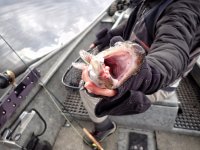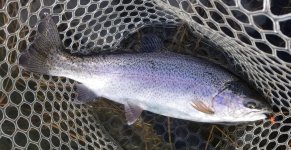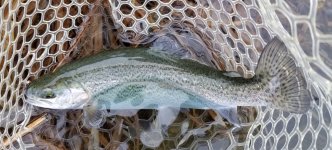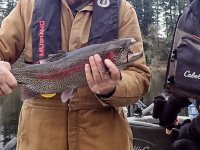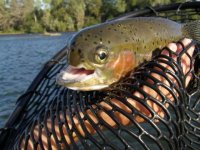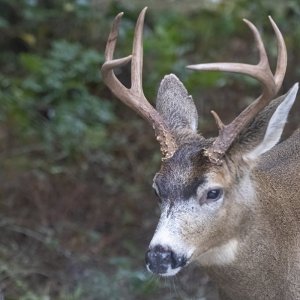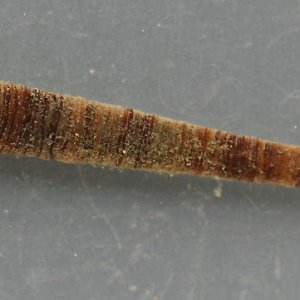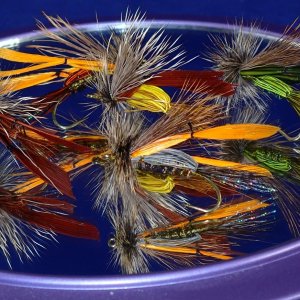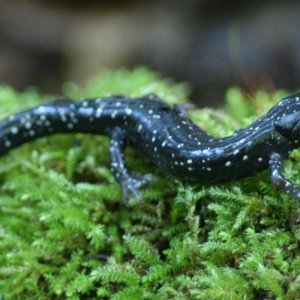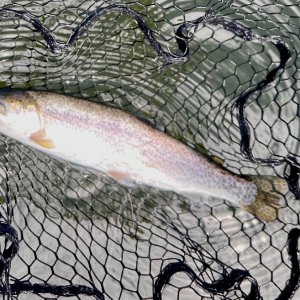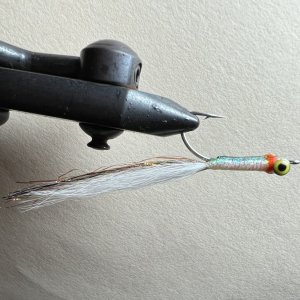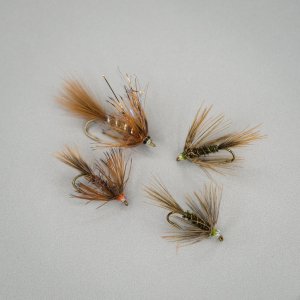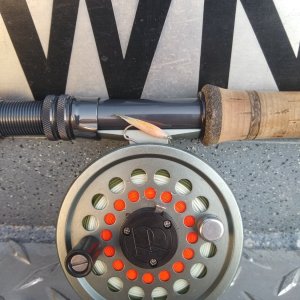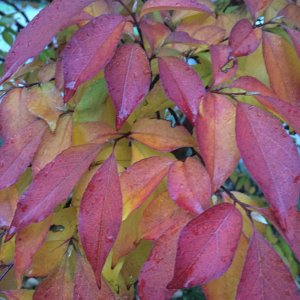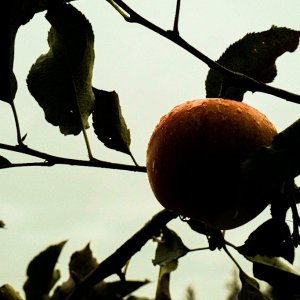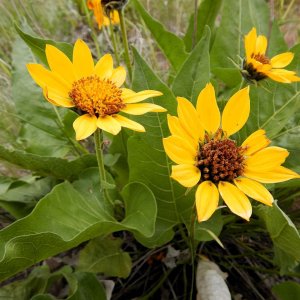You are using an out of date browser. It may not display this or other websites correctly.
You should upgrade or use an alternative browser.
You should upgrade or use an alternative browser.
Ells hatchery
- Thread starter The Coho King
- Start date
Ouch. I don't have an answer for you. Maybe they can talk with the folks out this way. We get little ones from lyons ferry and big ones from tucannon. Always seem to be good looking fish, and the little ones eat well in a fish taco.
Attachments
Cowlitz Bottomfeeder
Life of the Party
Bambooflyguy
Life of the Party
There was a previous post about M lake zombies.....and Eells sub par brooders. C&R and selective lakes deserve better quality fish!What's wrong with this hatchery. Trout that look like noses cut off for tags, ripped jaws, tumors.
The Coho King
Smolt
Exactly! Not sure how many survive in that lilly algae lake, but why put in monstrosities to C&R. I don't think fish noses grow back.There was a previous post about M lake zombies.....and Eells sub par brooders. C&R and selective lakes deserve better quality fish!
The Coho King
Smolt
Dang turtle face trout! Sure be nice if the gave us a nice CnR or slot limit to release unless under 16" lake where the fished survive and grow on their own. Then they could eventually close this hatchery or only dump fish in Elma. Ah, but this WA.Sure don’t seem to.
View attachment 57553
There was a previous post about M lake zombies.....and Eells sub par brooders. C&R and selective lakes deserve better quality fish!
WDFW doesn't care about quality fishing. Just enjoy your sticker minnows and depend on us every year to provide the same or worse.
I think it comes down to budget and cost per fish. If WDFW/the state spent more on hatcheries, a lot of folks would crap themselves. It’s my understanding, please correct me if I’m wrong, that a lot of the nose and fin issues come from impacts with cement tank walls, and a lot more of the mutants survive in hatcheries due to lessened survival pressure (a hatchery is built around maximizing survival rates, while nature is built around the survival of the adequate).Instead of why put in such monstrosities, why raise such? The current acceptable standard at some hatcheries is poo poo.
You could probably artificially replicate a trout river enough to raise beautiful fish, but the cost per fish would be astronomical.
Last edited:
Divad
Whitefish
I agree to cost but some are minute additions at the margin to a hatchery cost. One of the cheapest preventative measures I have seen is various liners. There is a two part liner system that does a good job removing impacts and installs inside raceways.
These raceways haven’t evolved for decades. 90 degree walls, no natural material and usually no liners. If you have no incentive to innovate, innovation is never achieved. You could go tops down even, install snap together protection that overlaps the tanks top and extends to the bottom. Think rubber flexible bird spikes 3” all over rubber walls to deter and soften impact by spreading load.
These raceways haven’t evolved for decades. 90 degree walls, no natural material and usually no liners. If you have no incentive to innovate, innovation is never achieved. You could go tops down even, install snap together protection that overlaps the tanks top and extends to the bottom. Think rubber flexible bird spikes 3” all over rubber walls to deter and soften impact by spreading load.
I think it comes down to budget and cost per fish. If WDFW/the state spent more on hatcheries, a lot of folks would crap themselves. It’s my understanding, please correct me if I’m wrong, that a lot of the nose and fin issues come from impacts with cement tank walls, and a lot more of the mutants survive in hatcheries due to lessened survival pressure (a hatchery is built around maximizing survival rates, while nature is built around the survival of the adequate).
You could probably artificially replicate a trout river enough to raise beautiful fish, but the cost per fish would be astronomical.
This is why quality fishery regulations are needed on more lakes. Let's face it 90% of the lakes on my side of the cascades are fished heavy under put and take rules for dinks for about two weeks after the opener then basically dead. Hold over fish and fry planting are a good thing. I agree there's a cost to a fish. So why let it be part of a heavy stringer and freezer burned only to teach young anglers that the resource is to be treated that way. The culture problem in sporting angling starts young. Quality regulations get a higher quality fish and fishing as well as higher quality anglers. There's a place for put and take but it shouldn't be the model.
The problem with quality lakes is….many just aren’t that quality anymore.
There is no way I’m driving 3 hours or so to fish some quality lakes just for the fishing alone and to catch 13-17” fish. That’s just me though.
Adding in some nice scenery may help but I probably still won’t get me to go.
I can catch the same or better quality fish in a few local put and take lakes that are an hour or so from my place.
The best lake fishing I’ve ever had in this state was the third year after a rehab on put and take lakes planted with fry.
SF
There is no way I’m driving 3 hours or so to fish some quality lakes just for the fishing alone and to catch 13-17” fish. That’s just me though.
Adding in some nice scenery may help but I probably still won’t get me to go.
I can catch the same or better quality fish in a few local put and take lakes that are an hour or so from my place.
The best lake fishing I’ve ever had in this state was the third year after a rehab on put and take lakes planted with fry.
SF
The problem with quality lakes is….many just aren’t that quality anymore.
There is no way I’m driving 3 hours or so to fish some quality lakes just for the fishing alone and to catch 13-17” fish. That’s just me though.
Adding in some nice scenery may help but I probably still won’t get me to go.
I can catch the same or better quality fish in a few local put and take lakes that are an hour or so from my place.
The best lake fishing I’ve ever had in this state was the third year after a rehab on put and take lakes planted with fry.
SF
I hear you and think the point is valid. I also would like to highlight the fry planting of lakes. It's cheaper, produces a higher quality fish, and keeps a range of size classes in the lake available to catch. I personally would drive a ways to catch consistent 12-18" fish. I'm starved in put and take land with pretty low quality fish though so my metric is influenced by that. I will say one of my favoured lakes is open year round. That alone makes for a quality experience in the off months. It's not way out there but you wouldn't know it in the winter when fishing is still pretty darn good and there's very few folks around. Either way I feel that if funding is a limiting factor to planting quality fish we should start with fry and let nature do some of the work. Time is a valuable resource and you obviously don't want to devote this strategy to lakes that winter kill etc but the put and take model across the board turns myself and other anglers off. I'm always impressed by the riches of the Eastside lakes. I realize it's a different ballgame there but I would be a Stillwater junkie if I had that fare available regularly. I want to get excited for Stillwater fishing as my usual pursuits for steelhead and salmon are just not fulfilling as they once were. Some quality lakes with year round seasons and regulated in a way to keep the power bait freezer burn stringer crowd at bay would be all the excuse I need. And fry planting is a way forward in my opinion. I don't know about you but I really like fins on my fish.
I worked a couple of years in a lab that worked with trout and salmon and even though we had nowhere near as many fish as a hatchery produces cleaning was no joke. It's all well and good to say that changing the raceway design would be helpful for the fish but when I think about the easiest design to maintain for the people who have to work with the fish every day, featureless and concrete makes a lot of sense. Anywhere that waste builds up has to be vacuumed/cleaned and dead fish have to be removed. Any extra pieces like liners if you are trying to manage tens of raceways would end up having a pretty large time cost to maintain and work around.I agree to cost but some are minute additions at the margin to a hatchery cost. One of the cheapest preventative measures I have seen is various liners. There is a two part liner system that does a good job removing impacts and installs inside raceways.
These raceways haven’t evolved for decades. 90 degree walls, no natural material and usually no liners. If you have no incentive to innovate, innovation is never achieved. You could go tops down even, install snap together protection that overlaps the tanks top and extends to the bottom. Think rubber flexible bird spikes 3” all over rubber walls to deter and soften impact by spreading load.
There are definitely other options though, after doing a google search it looks like circular tanks are working out for some hatcheries in Alaska.
Divad
Whitefish
Of course it’ll have additional cost but not as much as completely redesigning raceways into circles (which do help). I am completely okay with a couple hours extra a week in labor for vastly healthier product.I worked a couple of years in a lab that worked with trout and salmon and even though we had nowhere near as many fish as a hatchery produces cleaning was no joke. It's all well and good to say that changing the raceway design would be helpful for the fish but when I think about the easiest design to maintain for the people who have to work with the fish every day, featureless and concrete makes a lot of sense. Anywhere that waste builds up has to be vacuumed/cleaned and dead fish have to be removed. Any extra pieces like liners if you are trying to manage tens of raceways would end up having a pretty large time cost to maintain and work around.
There are definitely other options though, after doing a google search it looks like circular tanks are working out for some hatcheries in Alaska.
@Dustin Chromers
I totally get the travel part if you are in an area with poor Stillwater fishing, especially with the lack of salmon and steelhead opportunities.
I really like the open year round, put & take lakes myself. Not much competition in the winter and all the fish heads at the launch help cull some of the food competition in the lake.
There are a few general season lakes that I’d love to see go year round, but it will likely never happen.
I also agree with you on the the lack of competition after the first few weeks. I know a lot of fry if planted would fall victims to a number of predators, but those that make are really good quality, hard fighting fish.
SF
I totally get the travel part if you are in an area with poor Stillwater fishing, especially with the lack of salmon and steelhead opportunities.
I really like the open year round, put & take lakes myself. Not much competition in the winter and all the fish heads at the launch help cull some of the food competition in the lake.
There are a few general season lakes that I’d love to see go year round, but it will likely never happen.
I also agree with you on the the lack of competition after the first few weeks. I know a lot of fry if planted would fall victims to a number of predators, but those that make are really good quality, hard fighting fish.
SF
I grew up in Thurston County, and the trout stocking strategy then consisted of a combination of spring "legal" stocker plants and Sept. fingerling plants. Those fingerling plants are what produced the quality trout. (An aside, I met a WDG worker when he was doing a fingerling plant, and he said they could stock the lake for $1.50. I think that was a gross under-estimate even back then, but it help makes the point about costs.) Fast forward to 1992 when I moved back to Thurston County and was looking for the lakes with fingerling plants. I was told that doesn't work well anymore because commorants, that used to forage in salt water, discovered the low land lakes and stocked trout. Damn cormmorants never used to be on the lakes, and a local neighbor made sure the merganser population stayed under control too. Trout fishing was pretty good. Lethal removal of the predators is no longer allowed, and neighbors will report you even if you're legally shooting at mallards in season. And residents on some lakes raise hell about rotenone use also, . . . and then complain about the lousy trout fishing.Hold over fish and fry planting are a good thing.
The Coho King
Smolt
Makes sense, noticed a whole log full of those awful commorants. But I don't think they would eat Ells jumbos. I don't mind yokuls keeping stocker fish, this state will never go CnR or slot, but the simple solution to extend the season is lower limit. That's what they do to use in the fall for salmon.I grew up in Thurston County, and the trout stocking strategy then consisted of a combination of spring "legal" stocker plants and Sept. fingerling plants. Those fingerling plants are what produced the quality trout. (An aside, I met a WDG worker when he was doing a fingerling plant, and he said they could stock the lake for $1.50. I think that was a gross under-estimate even back then, but it help makes the point about costs.) Fast forward to 1992 when I moved back to Thurston County and was looking for the lakes with fingerling plants. I was told that doesn't work well anymore because commorants, that used to forage in salt water, discovered the low land lakes and stocked trout. Damn cormmorants never used to be on the lakes, and a local neighbor made sure the merganser population stayed under control too. Trout fishing was pretty good. Lethal removal of the predators is no longer allowed, and neighbors will report you even if you're legally shooting at mallards in season. And residents on some lakes raise hell about rotenone use also, . . . and then complain about the lousy trout fishing.

